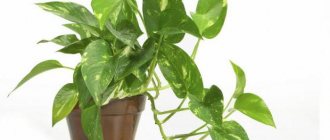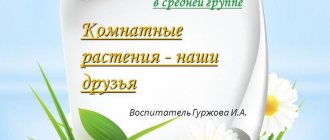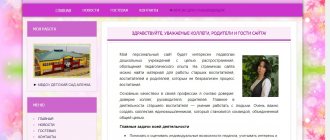Poisonous perennial shrubs
Not a single private plot of land, public park or public garden is complete without landscape design in the form of flowering broad-leaved shrubs, bushy creeping conifers, and perennial herbaceous plants. Not all of them are harmless to humans and animals. Common plants may have properties that are harmful to health.
After reading the article and other materials, some will want to take drastic measures. But the plants do not have to be destroyed. They can be fenced off or transplanted to another place so that it is inaccessible to children and animals who like to try everything on the tooth or tongue.
Hydrangea
Often white, bluish, light or dark pink elegant Hydrangea balls hang from front gardens onto the street. Not all hydrangeas are poisonous. However, if animals walk around the bush and don’t eat a single leaf, this is a sure sign that the plant is poisonous.
Large amounts of cyanide are found in Hydrangea macrophylla, especially in the flower buds. The color of the inflorescences does not affect its toxicity. Obvious symptoms of poisoning occur if you chew leaves or a flower bud: difficulty breathing, fainting, drop in blood pressure with rapid pulse, convulsions.
For growing in the garden, you can use Russian cultivars, in which manifestations of toxicity generally disappear with age. Serrata hydrangea, or tea hydrangea (Hydrangea serrata) is a desirable shrub in the garden. Its leaves are also not poisonous. In Japan and Korea, due to their high sugar content, they are even used as a sweetener in tips for diabetics.
Large-leaved hydrangea (Hydrangea macrophylla). enbodenumer
Oleander
The charming common oleander (Nerium oleander), strewn with soft pink flowers, leaves no one indifferent. The plant is so magnificent in its lush beauty that some gardeners, even knowing its toxicity, still grow this plant not only in open ground, but also in apartments, winter gardens and greenhouses.
Beneath the graceful exterior lie big problems, especially scary for young children. The whole plant is poisonous: flower nectar, juice, young shoots and leaves. One leaf can damage the central nervous system and affect the digestive and circulatory systems. A pleasant, attractive aroma causes headache, nausea, shortness of breath until it is necessary to take resuscitation measures.
Common oleander (Nerium oleander). Forest and Kim Starr
Rhododendron
Another poisonous plant is the evergreen shrub Rhododendron, whose leaves serve as a living decoration for the garden in winter. For the extraordinary beauty of the bush's spectacular large flowers, pink, white, purple and other colors, rhododendron is called a divine plant. But all parts of the rhododendron plant are poisonous and, if ingested, can cause coma.
Rhododendron. Ben Rushbrooke
Particularly dangerous
undoubtedly
Veh, or hemlock (Cicuta virosa)
According to legend, it was the hemlock drink that Socrates drank in prison (according to another version, it was hemlock, which will be discussed later). One of the most poisonous plants, especially dangerous because it is easily confused with other absolutely harmless umbelliferae. A distinctive feature of hemlock is the structure of the rhizome: it is internally divided by partitions into transverse cavities:
Hemlock rhizome. Photo from the website www.biolib.cz The entire plant is poisonous, but the maximum concentration of hazardous substances is in the rhizome. Vekh poses a threat not only to humans, but also to animals, so it should be disposed of both near housing and in places where livestock graze. At the same time, be careful - make sure that the hemlock juice does not get on the skin and mucous membranes.
Henbane (Hyoscyamus)
About a person who behaves inappropriately, they sometimes say that he “ate too much henbane.” In fact, the alkaloids contained in this plant cause confusion, visual disturbances and other extremely unpleasant symptoms. All parts of the plant are poisonous, but especially the small seeds, similar to poppy seeds.
Henbane. Definitely dangerous
Hemlock (Coniun)
Another dangerous representative of the umbrella family is the spotted or speckled hemlock. Extremely poisonous; dangerous for both people and animals. The alkaloids contained in all parts of the plant are deadly; poisoning develops quickly, is very difficult and often ends in the death of the victim from respiratory arrest. Hemlock juice causes skin irritation and dermatitis. It is necessary to learn to distinguish hemlocks from other umbrellas. Photo from the site static.panoramio.com A feature of the plant that allows it to be distinguished from other members of the family is the intense purple color of the lower part of the stem and spots of the same color on its surface (it was they who gave the hemlock the name “spotted”). If you grind the small leaves, you can smell an unpleasant “mouse” smell. Belladonna (Atropa belladonna), hellebore (Veratrum), and calla palustris are also extremely dangerous. The list presented is, of course, incomplete. It can take a long time to expand, but the point is probably not in the enumeration
You have probably noticed: the named plants - even the most poisonous ones - can only harm an ignorant person, and, moreover, a careless and imprudent one. Therefore, I am sure: the most important thing is to learn a reasonable attitude towards nature and its gifts; do you agree? There is no need to strive to completely remove or destroy potentially dangerous grasses, flowers and shrubs around you
This idea is not feasible. But you definitely need to understand them, find out the sources of the threat and understand how to protect yourself and your loved ones. I hope now you know: it's not too difficult.
Other dangerous inhabitants of window sills
Among the dangerous plants are the following:
Ficus. Its glossy leathery leaves look great. But they contain and release substances that are dangerous for asthmatics.
Spathiphyllum. This herbaceous inhabitant of window sills will decorate any room, but if its juice gets on the skin, it provokes ulcers that do not heal for a very long time.
Poinsettia. This indoor plant has another name - “Star of Bethlehem”. Its toxicity is comparable to that of milkweed, and if the juice gets into the eyes, there is a risk of blindness.
Adenium. An original and, one might say, exotic flower: thickened stems, bright large flowers hide the poisonous juice.
Important! Almost all indoor plants that are dangerous to humans are also harmful to pets. But if a person can get away with unpleasant sensations, then a cat that has eaten cyclamen or another poisonous plant will most likely die
15
Treatment
Cleanliness is one of the main conditions for maintaining a preschool group. To ensure this, the following methods are used:
- treatment;
- quartzing;
- ventilation;
- wash;
- cleaning.
All surfaces, furniture, blinds, pots, and toilets are treated using a disinfectant solution. It is stored in the staff room. Children should not have access to the solution.
Quartzing in kindergarten is carried out in groups for minors and other premises every morning and evening. When using safety lamps, the absence of pupils is not necessary.
Ventilation is an important stage in treating rooms from germs. SanPiN establishes a ventilation schedule in kindergarten. The premises are ventilated according to the table.
| In the presence of children | Without pupils | |
| In the warm season | Wide one-way aeration | Through ventilation |
| During the cold season | Forbidden | 1. Through ventilation, which ends 30 minutes before the children return. 2. 10 minutes every 1.5 hours. |
A prerequisite is to ventilate bedrooms before napping. In winter, ventilation of bedrooms stops 10 minutes before bedtime. In summer it is possible to sleep with the windows open.
New rules for ventilation in preschool educational institutions include a ban on ventilation through toilet rooms. Wet cleaning is carried out in all rooms 2 times a day. General cleaning should be carried out in spring and autumn.
Daily schedule and working hours of the teacher
Children are admitted to kindergarten personally by a teacher or a medical professional. This need is associated with preventing the admission to classes of children with any infectious or contagious diseases. If a kindergarten worker suspects an improper health condition, the child is not allowed to study.
As for the organization of the educational process and rest regime, most of the standards are advisory in nature. The main ones include:
- the continuous period of activity should not exceed 6 hours in groups with children over three years old;
- It is advisable that walks in the fresh air take three to four hours daily;
- It is not recommended to take children outside when the temperature is less than 15 degrees;
- It is advisable to divide the time of street walks into two periods;
- depending on the length of the children’s stay in kindergarten, the number of meals and the availability of daytime rest are recorded;
- The duration of lunchtime sleep varies between 2-3 hours, depending on the age of the student.
Additional Information
In 2022, SanPin additionally fixes the maximum permissible terms for conducting educational classes for children, which depend on the age of the children. It is mandatory to calculate both the total daily educational time and one-time continuous activities.
Why aren't they allowed?
The fact is that among these “pets” there are prohibited varieties that can be very dangerous to a child’s health. Based on the principles of choosing indoor flowers for a kindergarten, you can create a wonderful, and most importantly safe, green corner. Children will be interested not only in the process of becoming familiar with specific varieties of vegetation, but also in learning how to properly care for them, because the surrounding atmosphere is very important for good health and full development.
List of prohibited plants:
- certain species have thorns or pointed leaves that can injure children (rose, cactus, certain varieties of aloe);
- some of them are saturated with poisonous juice, which, when interacting with the skin, can lead to severe burns (Dieffenbachia, Alocasia, Croton and others);
- Some representatives of the plant world have colorful fruits that can lead to serious disorders: nausea, vomiting, pain in the abdominal area.
FITOVERM
Place No. 3: FITOVERM is one of the best today. The action of the drug is aimed at destroying various insects - aphids, thrips, whiteflies, codling moths and others, including mites. The action of the drug is contact-intestinal; when the active elements enter the body of an insect, they paralyze and then lead to death. Advantages of the drug: it is of biological origin, the active substance of the drug is the waste products of soil inhabitants; the drug quickly decomposes in water and soil without causing harm to the environment; fruits treated with it can be used for food within two days. There are practically no disadvantages of the drug, the only thing is that it requires 2-3 times of treatment. More information about the drug
Bulbous cunning
there is a simple remedy
It is safer to store planting material separately from daffodil products
Snowdrop (Galanthus nivalis)
Very poisonous; in traditional medicine it is used to produce potent drugs used in neurology, but traditional medicine does not use this plant due to the high risk of poisoning in case of overdose. Snowdrop bulbs and fruits are dangerous, the consumption of which can cause nausea and vomiting, and in severe cases, serious kidney damage.
Snowdrops are highly poisonous. Photo by Samdolis (Svetlana)
Narcissus
The bulbs are poisonous; the alkaloid lycorine they contain stimulates the vomiting center in the brain, so a “pleasant” pastime after tasting daffodils is guaranteed.
It is not advisable to taste daffodil bulbs
DECIS
Place No. 10: DECIS is a contact-intestinal insecticide that belongs to the group of synthetic peritricides. Used to protect various crops from a variety of pests. Contains a high concentration of the active ingredient deltamethrin - 250 g/l. The objects of its influence are aphids, psyllids, leafhoppers, whiteflies, scale insects, bark beetles, weevils, weevils, Colorado potato beetles, beetles, grain borers, moths, and codling moths. The advantages of the drug are high efficiency at low dosages, moderate danger to humans and animals, and safety for the soil. Decis is compatible with almost all growth stimulants, fungicides, and insecticides. Exceptions are alkaline products, for example, Bordeaux mixture.
Thus, each product is original in its properties, the chemical active substance on the basis of which it is made, or the biological mechanism of action. It has both undeniable advantages and significant disadvantages that limit their use. Therefore, when considering which insecticides to choose, it is worth considering many, many factors.
All of the above TOP-10 drugs have shown the best results in practice and are recommended for use by both agricultural technicians and amateur gardeners. Therefore, in order not to “shovel” a lot of information on what to choose, opt for one or more insecticides from the TOP 10 list.
When using, follow the instructions for the insecticide used; preference should be given to systemic and multicomponent preparations. When choosing, be guided by the balance “Efficiency-Safety”. Observe the dosage of drugs and the frequency of treatments. And although the TOP 10 includes mainly chemical insecticides, we recommend paying closer attention to biological insecticides.






